When you're stuck at home for one reason or another, whether it be lack of inspiration, motivation, or simply the weather, coming up with a few creative ideas for home photography can be just the ticket. These are the perfect times to take a closer look at the things you live with every day and turning a creative eye towards them. Your home can be such a wonderful studio for natural light and often the things you know and love make wonderful subjects for photography. But getting that initial idea can be a bit of a drag, which is why we have come up with a few for you!

In this article, we are sharing 36 photography ideas that you can try from home – even with a phone camera in many of cases. Remember, the creative eye and visualization that you use to look out for objects, light, and photography ideas within your house will help you to observe and photograph creatively when you are outdoors.
Some of us spend a lot of time at home for many reasons, and even those who have a busy life outdoors most of the time come back home to a place where they can relax and unwind from the chaos. One of the things that can help to calm one’s mind is photography. Instead of getting the camera out for special days, events, or occasions, you should try to come up with the habit of using it every day.
If you have a passion for photography, photographing anything around you with a creative eye will become a habit over time. We hope that at least a few of these photo ideas will inspire or motivate you to start shooting again and develop your own creative ideas to photograph the things you see around you daily.
1. Take a Classic Lifestyle Photograph
Home is the place where we live and spend most of our time, and it can be one of the best places for meaningful lifestyle photography. But getting photography ideas at home isn't always easy for many of us who feel uninspired. Make use of natural light and capture everyday moments, even someone cooking or gardening, in a very candid way. Capture many photos from various angles and perspectives and choose the best.
If the people in your house are comfortable, you can capture photographs of them, the family, children, pets, etc., doing their daily chores. Capture a story, and do not go for any posed shots. Make use of natural or ambient light in your home photography that will usually illuminate a space, and it is good not to use any artificial lighting.

2. Shoot a Well Composed Food And Drinks Photo
Photographing food is a calming and exciting genre of photography, and most of the time, a simple food or a drink, if photographed well, will look stunning. The food being photographed could be something that you freshly baked or cooked at home or a drink that you just prepared.
Make use of beautiful crockeries and cutleries to style for the photoshoot. You can use interesting props like fruits and vegetables, flowers, towels, etc., to add interest and meaning to the photograph.
Fruits and vegetables can be misted to give a fresh look. To bring in the mood in a drink – hot or cold, capture the drink when hot for hot drinks, and for cold drinks, capture them with the condensation on the glass to bring the chilled effect in the photo.
You can also capture photos of someone serving or eating the food. You could include just the hands or the person itself. Try to capture interesting expressions if possible that will add to the story.
See our more comprehensive article for more food photography tips.

3. Take a Pet Portrait
Pets are part of the family and home and also have favorite spots and sports that they enjoy indoors and in the home garden. Capturing them in their favorite spots in a relaxing mood/pose will be one of the best things to photograph at home and to also keep as memories.
When photographing pets, make sure that they are relaxed and happy. You could let them do their own thing, wait for their favorite moments, mood, etc., and then photograph them.

4. How About a Classic Family Portrait Photo?
The time when everyone is at home is a great time for family portraits. Capture interesting candid moments, for example, everyone snuggled up on a sofa, or having a laugh, having dinner or a drink together, bonding between family members, etc.
Remember that if you are comfortable, then you can capture family portraits even on the front porch. You will need a tripod to set the frame and focus manually, then use a remote release or the delay timer to include yourself as well in the photograph.

5. Use Windows Creatively
Windows are interesting frames to look through and photograph something out of the house, or to photograph from outside the house of someone looking through the window, for example, your pet or family member looking out of the window or by a window sill.

Either way, look for interesting subjects to photograph.
For example, your pet or someone looking through a window:
- Step outdoors to capture your subject looking out of the window. Use the window as a frame to capture your subject. Try various angles and perspectives for unique shots, and use them creatively if there are interesting reflections.
- You can stay indoors and capture your subject looking out. This can be composed interestingly to tell a story. You can even go for beautiful silhouettes if the subject is backlit.
You can also photograph other scenes that you can see through the window. Rainy or foggy days can be great for beautiful abstract images, and frosted glass can also help with interesting abstract images. You can do the same with doors as well.

6. Get Into Abstract Photography
Abstract photography opportunities are everywhere, right from the little things lying around to bigger structures that you see everywhere. It only takes the eye of a photographer to see something clearly and then capture its abstract nature. See some useful and more specific tutorials here.
To capture abstract photos, you need to look closer. Focus on a small area than looking at things on a large scale. Think macro and then explore the finer details in the things lying around to capture stunning abstract images.

7. Take an Architectural Photograph
When we hear the phrase architectural photography, we think of great outdoor architecture. The houses that we live in are also architectural structures, and most of the time, we have some interesting and fine details in our own homes that we often overlook.
Look around the house and develop interesting areas or parts of the home that can be captured to portray interesting architectural details. A simple contrast in colors, details in a railing, etc., can be beautifully and creatively captured for architectural photography.
Also, think of minimal compositions here to keep things simple. Look for frames of interest both inside and outside the house.

8. A Still Life Photograph at Home
Still-life photography is a slow process, and it is mostly captured indoors and at home. You only need some interesting objects lying around your house, or you can even use fruits and vegetables, spices, and other things from your kitchen to capture meaningful still-life photographs.
Pay attention to the subject, supporting elements, props, light, and composition when capturing still life. Still-life photography is also a great way to learn camera settings, composition, and understand light and colors in photography.

Find out how to capture great still life photographs at home – How To Get Awesome Still Life Photographs At Home
9. Shoot a Self Portrait
We photographers very rarely capture photos of ourselves or let others capture our photos. When at home, one thing that we can focus on is capturing interesting self-portraits.
Look for the light, especially near a window, and a time when the light is soft. Set up a tripod and use a remote shutter release or timer delay feature to capture the photo.
You can also capture dramatic self-portraits with the film noir look when the light is harsh. Make use of the shadows from window frames, blinds, or other props to get effective results.
Besides, for a different look, you can use fairy lights to compose or bring a cheerful vibe to your images. Have them in the foreground or background when capturing self-portraits.

Find out how to tell unique stories through self-portraits here – How To Tell Stories Through Unique Self-Portraits
10. Using Mirrors for Creative Composition
Mirrors are a great way to capture reflection and interesting abstract shots indoors. Think creatively and make use of the mirror in such a way that it makes the image more intriguing or mysterious.
You can look for different angles and perspectives, mist the mirror or fog it up for interesting abstracts, etc.

Here are some guides:
11. Use Prisms to Experiment With Light
Prisms refract light in a very interesting way that can be creatively used for photography. This can be as the refracted image of the subject, or creatively using the refracted light in the scene, on the subject, etc.
Prism photography takes some practice, and you may not be capture the same image twice. It can also take some time to perfect this skill, but once you get an idea of how it works, then the results can be many and stunning.

Here is a detailed guide on how to use a prism for creative photography – How To Use A Prism For Creative Photography
12. Shoot Some Smoke Photography
Smoke photography is an interesting abstract kind of photography that can evoke a sense of mystery and also help with creative photography. Smoke photographed in a controlled environment like indoors can look elegant if done against a good backdrop and/or with suitable props or supporting elements in the frame.
Matchsticks or incense sticks that you have at home or other oil diffusers/burners can be used to create interesting smoke. Always be careful to take all the precautionary measures when dealing with fire and smoke. Have proper ventilation to avoid any accidents.
You can use gels to create colored light to illuminate the smoke and capture unique images. Avoid any stray lights in the background or around the scene to get a clean frame with a focus on the smoke and the colors.

Read more on how to photograph smoke here – How To Photograph Smoke
13. High Speed Waterdrop Photography
Water drops bouncing off the surface of water or splashing on a surface are exciting and beautiful to look at. If you try to capture their photographs, you can have some artistic results. A drop of water or any liquid is dropped on the water in a container to capture water drop photographs, and this can also be done with any other liquid like fruit juices, milk, etc.
This is a high-speed genre requiring you to use the right shutter speed and light to capture effective photos. Most professional photographers have a studio setup for waterdrop photography, but you can also work with a normal setup.
You will need a flash to capture the high speed of the splash created by the drop, but depending on your camera's fastest shutter speed and with the right amount of light, you will be able to capture the water drops even without a flash. Also, use interesting backgrounds for beautiful results.
Try using colors in the water or colored lights to illuminate the water drop. These can result in a very abstract kind of photography. It is good to use a tripod and cable release and to shoot in burst mode so you can choose the best one.

14. Add Some Oil And Water for Interesting Photographs
Oil and water photography needs a very simple setup of having a glass dish or tray with water and some oil, a background, and a camera. Having a tripod will help to compose and focus on the photography part flexibly. Adding some dish soap will help to give definition to the oil droplets.
Place the background a bit further away from the dish or tray so you get a beautifully blurred background with interesting colors. This setup can be great for abstract photography, so if you want a change in patterns, just stir gently on the water's surface so the oil droplets align themselves differently.

15. Get Into Water Splash Photography
Similar to waterdrop photography, when dropping objects in the water, water splashes, and this splash can be captured for interesting results. It is good to shoot these on a white or black backdrop. Other plain colors will also work, but darker colors will help the splashes stand out.
A clear container with water will be a great subject to photograph what happens inside the container. You can drop fruits or vegetables, ice cubes, etc., to capture water splash images.
You will need to set the camera on a tripod, use a cable or remote release for the shutter and use a high shutter speed to capture the splash. Capturing images in burst mode will help capture a series of actions, so you can choose the best ones later when post-processing.
Lighting is also very important to get the best results. Try side lighting also slightly from the back to see the different results.

16. Shoot Some Soap Bubbles
Soap bubbles are interesting subjects to photograph because of how the light gets reflected and refracted on and through the bubble. The textures and patterns on the surface of the soap bubble can be very interesting, and they can also help with capturing beautiful, otherworldly macro photographs. Make sure to use soft light to illuminate the soap bubble for closeup photographs.
Find out how to capture otherworldly photos of soap bubbles here – David Chesterfield’s Strange Planets: How To Photograph The Otherworldly Beauty Of Soap Film

17. Photograph Refraction Through Glass
Light can bend in interesting ways when it passes through the glass, and hence the resulting images can feel intriguing and quite surreal sometimes. You can use a glass tumbler, a wine glass, glass bottles, glass dishes, prisms, crystals, etc., to capture interesting refracted patterns.
You can capture abstracts by using backgrounds that have interesting patterns. Just put the glass object before the pattern and shoot from different angles and perspectives.

18. Try a Side Lit Photograph
Windows and doors are great sources of beautiful side light. You should take this opportunity of natural and beautiful light to illuminate the scene or subject for beautiful side-lit photography.
Based on your visual appeal, subject, and story, you can either use light during the golden hour, strong midday light, or soft light on overcast days. You can also use reflectors and diffusers to manipulate light according to your visual appeal.
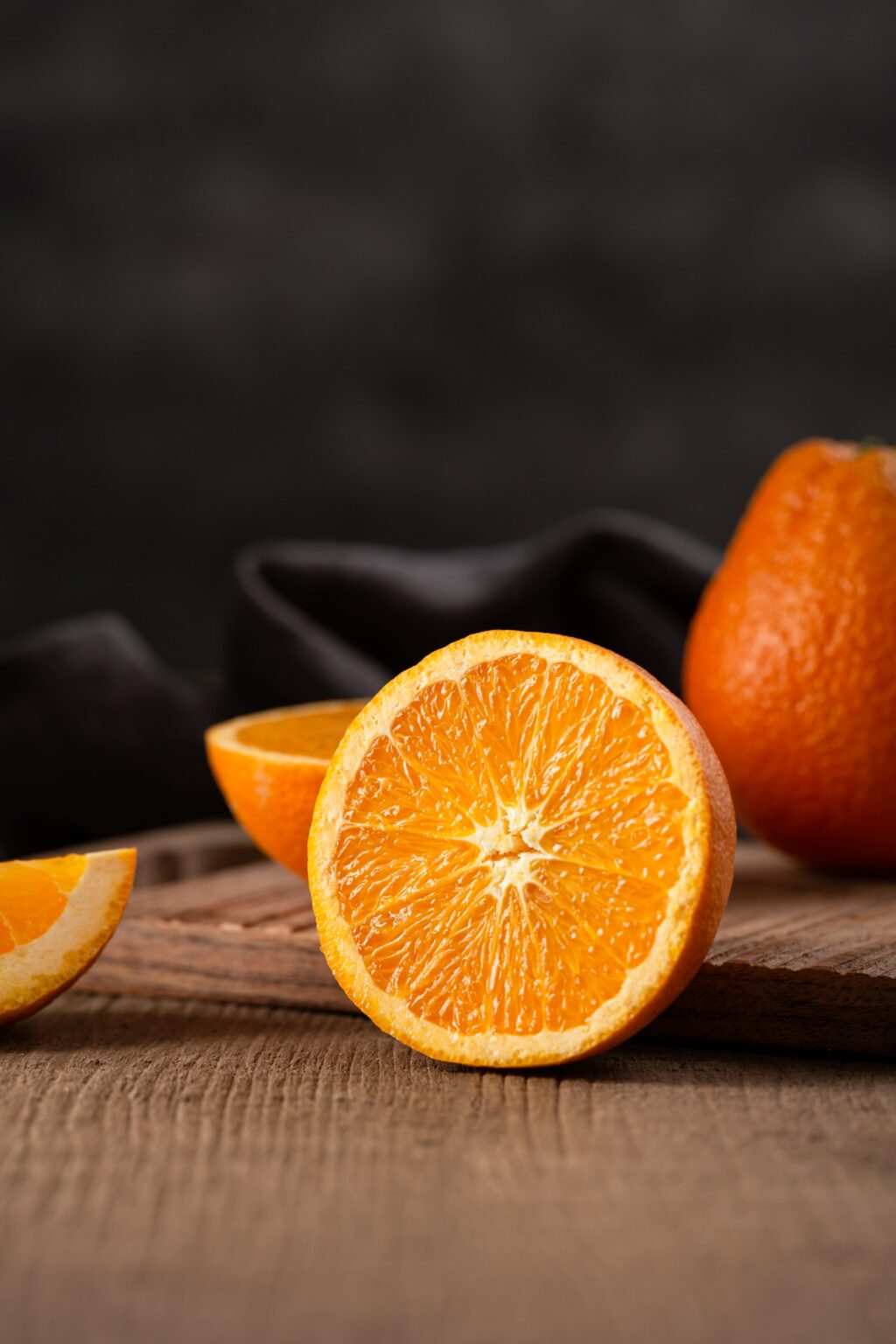
19. Take a Silhouette
Silhouettes are great to experiment with when indoors. The basic factor is you need to backlight your subject, which means you need to shoot toward the light source.
Windows, doors, hallways, etc., are great places to capture interesting silhouettes. You can photograph a silhouette of a person or things that you have in your home. Interesting toys can also be used for silhouette photography.
Make sure that the choice of subject has an interesting shape and form to capture an effective resulting image. Keep the light source behind the subject so that the subject is captured as a silhouette.

20. Dramatic Photography With Light And Shadows
At home, it is a great place to safely and slowly explore dramatic photography. We have beautiful but dramatic light at certain times of the day coming in through fixtures in windows, blinds, openings, cracks on fences, and so on.
The light and shadows caused by this light can be effectively used to photograph objects and capture portraits, including self-portraits. The lines caused by this light can also be used to compose the photograph creatively.
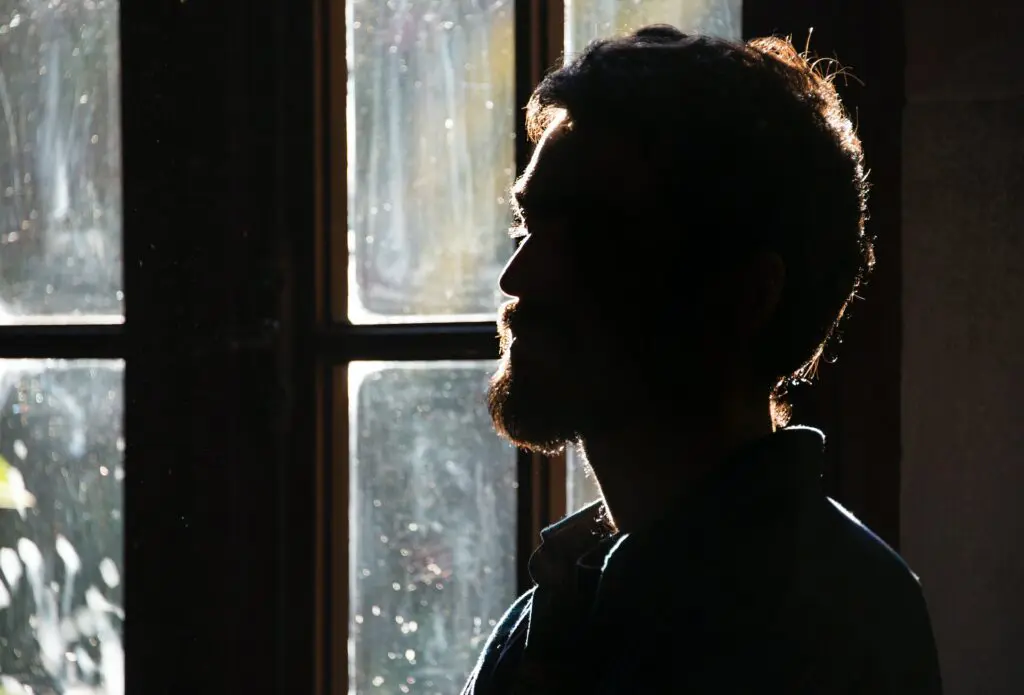
Check out how you can creatively use dramatic light in the article here – Dramatic Light Leaves Your Portraits Expressive and More Exciting
21. Experiment With Tabletop Photography
With the increase in popularity of tabletop photography, it is one of the many slow and creative genres that a photographer can work on for capturing artistic images. You can do this with minimal gear and some great window lighting.
The beauty of tabletop photography is that you can use any objects lying around in the house, including food, flowers, leaves, etc., compose them creatively with an effective background, and then photograph them. There is so much that can be done regarding photography on a table.

You can check out a lot of ideas and tips here – A Guide To Tabletop Photography: Tips, Ideas, And Setup
22. Try Composing a Scene With Flat Lays
Flat lays are also a type of tabletop photography where the subject and other elements are shot from a top-down perspective. This kind of image has gained much popularity in recent years, especially on social media, and is a great way to capture artistic and visually pleasing images.
Since you will be shooting directly from above, you can either arrange the subjects on the floor and photograph or if set up on a table, you may need to climb up a step stool or ladder to get the shot, depending on the height.
A tripod is a great idea for tabletop photography because it will help with flexibility and ease in composing and capturing the photograph. Think about interesting subjects, stories, and compositions for interesting tabletop photography.
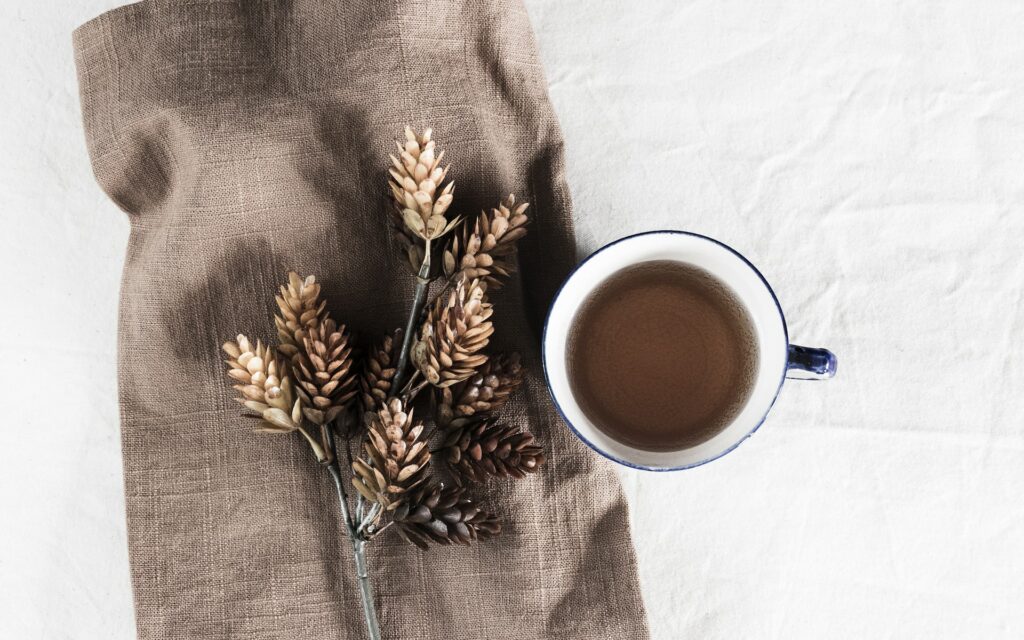
23. Photograph Photos!
We may all have some printed photos at home either in albums or displayed on the walls, cabinets, etc. These can be great subjects to photograph if framed well and interesting props are added.
For example, printed film photos, Polaroids from travels or taken for memories, other printed photos, etc., all make great subjects for photography. If you have photo books, they can also be photographed.
You can add a cup of coffee, flowers, or any other meaningful props to arrange/compose the photos. There are even strings of clips or photo hangers that can be used to hang Polaroids and other small photos. Come up with a creative idea to display and photograph them.
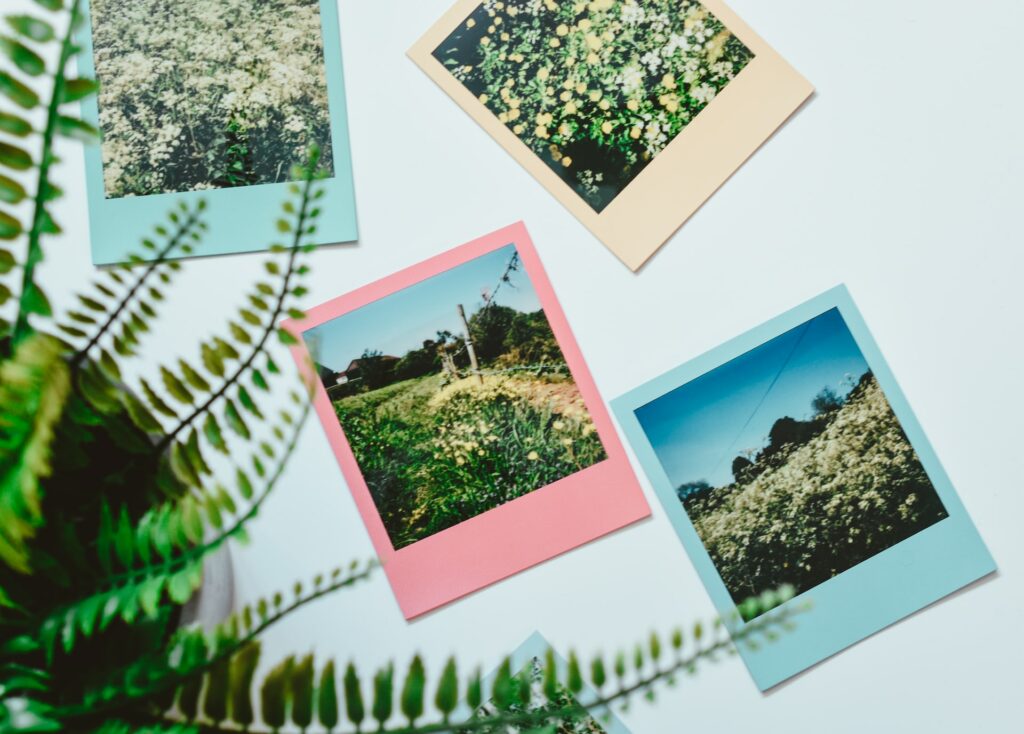
24. Try Some Garden Photography Outdoors
Gardens are relaxing places with plenty of subjects and other things to photograph. Even if you have a tiny garden, observe closely to capture what is growing in the garden creatively.
Flowers, leaves, bugs, gardening tools, closeup of textures, shapes, forms, abstracts, etc., are great ideas to try in your garden. Photographing your garden will also become an experience where you document what you are growing and how your garden is evolving.

Here are plenty of tips and ideas on what to photograph in a garden – Garden Photography Tips for Stunning Results
25. Try Some Garden Photography Indoors
There are a lot of things one can photograph in their home garden. Flowers, leaves, branches, plants, bugs, etc. You can go for the interesting textures, some macro, and even capture some abstract nature in your indoor garden.
Some gardeners have interesting small plants like cacti, succulents, and other garden craft works done like kokedama, tamandama, bonsai, wreaths, terrariums, scapes, etc. These can be great subjects for both macro and other interesting indoor garden photography.

Tell the story of your garden with these tips for stunning results – Garden Photography Tips for Stunning Results
26. Create Some Indoor Plants, Flower, or Leaf Arrangements
Most of us have some kind of plant or the other indoors, and they can add a lively mood to the house's interior. Most of the time, the plants are kept near doors and windows where they get enough light, and this can be a great location to photograph them.
Look for interesting backgrounds, lights, and details you can photograph. You can even use a macro accessory or lens to capture closeup details of your plant leaves and flowers.
Besides, if you love having cut flowers and leaves at home, or if you have flowers, uniquely shaped leaves in your garden, they can be great subjects to photograph. You can just choose one flower or leaf to capture a minimal photograph or photograph the whole bunch. You can use the surroundings in the frame to tell a story or provide an idea of where and how the flowers are set up. Soft light works great for flower photography.
You can also make self-portraits or capture someone else’s portrait by asking them to pose with flowers, or you can use them as props for other photography like food, still life, portraits, tabletop, etc.

27. Try Time-Lapse Photography
When we think of time-lapse, we at once imagine time-lapse videos of sunsets, clouds, landscapes, night sky, water features, and so on that are done outdoors. There are so many time-lapse ideas that can be executed from home. Ensure you have a strong composition to make the resulting time-lapse look interesting and effective.
Here are some ideas:
- In your garden – you can capture a flower or a leaf unfurling, or if birds visit your garden at a particular time, you can capture a time-lapse of their activity.
- If there are caterpillars of butterflies, you can time lapse them growing, the process of pupating and turning into butterflies.
- If you have a balcony, a rooftop, or a backyard where you can view the sunrise or sunset, you can capture a time-lapse of these events or even clouds on a stormy day.
- If you live in a city in a tall building, you can capture a time-lapse of the busy streets through your apartment window.
- There may be art projects that you work on sometimes, and these can also be captured as a time-lapse.

28. Create Compositional Elements At Home
Each home is different, and there will be some sort of architectural structure inside the house or around in the garden that can be used for compositional techniques, such as leading lines, frames, curves, etc. Some examples are hallways, staircases, shelves, wallpaper designs, interior decor and constructions, railings in stairs or balconies, trellises, fences, doors, gates, and so on.
Similarly, there will be doors, gates, trellis, arches, stairs, windows, large picture frames, etc., that can actually be used as frames to frame your subject.
All one needs to do is observe and develop an idea for photography. A corner of the house that we thought was useless or unappealing can quickly turn into a favorite spot to photograph something interesting.

29. Photograph Through Glass
Photographs captured through frosted glass evoke a certain mood and can create a sense of mystery. If you have a piece of glass at home, you can simply mist water on it and then photograph things through it to get a different result.
This glass piece can also be used to capture interesting macro images. For example, you can place the glass in front of an interesting subject like a flower or other and capture a macro image of the subject through a water droplet.

30. Try a Minimalist Shot
Minimal photography can be a great genre to practice at home indoors. Choose a subject and look for interesting features in the house, like walls, shadows, etc., along with meaningful props that can be used to add interest to compose the shot for your favorite subject.
You could choose any subject lying around in the house or even subjects that are found in abundance in your kitchen or pantry or photograph your family, friends, or pets, or bring a subject like a flower or a leaf from your garden or even photograph your food or drink for minimal photography results. Look out for interesting light and shadows for better results.
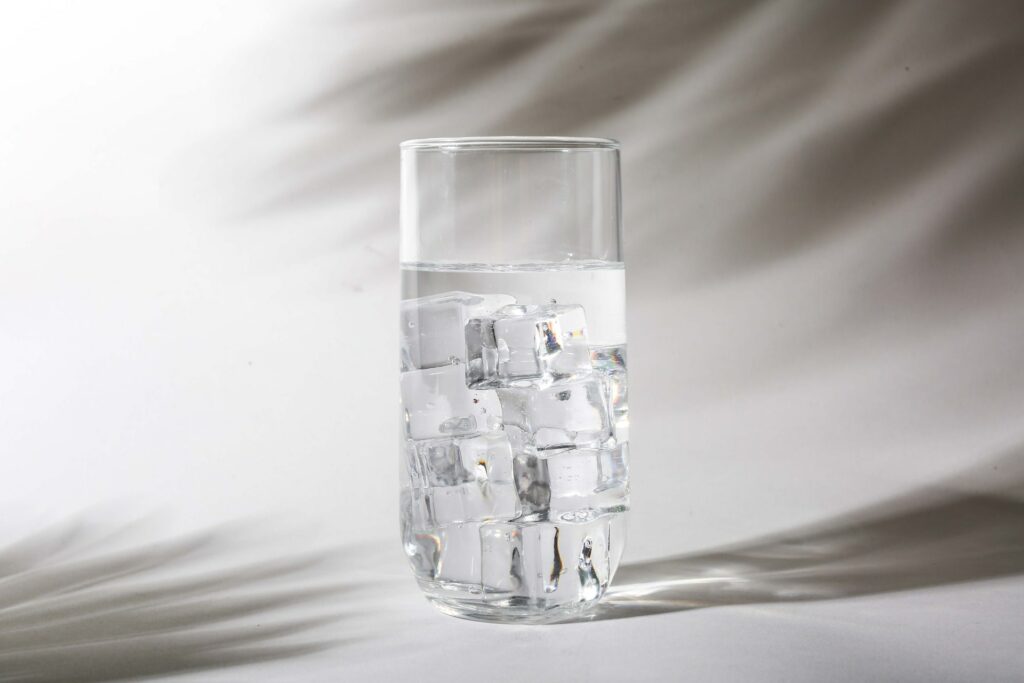
Here are some tips to get you going – 5 Tips To Help You Create Better Minimalist Photos
31. Use Interesting Features On Walls
The walls of each house are different, and they may come with minimal designs and patterns or complicated ones. Whatever the design may be, make use of the patterns and textures as interesting backgrounds for photography. This could be for still life, nature photography like flowers, plants, etc., or even for portraits.

32. Hone in on Light And Shadows
Homes are great places to have interesting shadows. These could be shadows caused by windows, doors, blinds, plants, or anything around. Look for interesting light and shadows around the house, photograph just the light and shadows, or use them as leading lines to frame subjects or add depth to your photographs.

33. Use Sheets, Blankets, Towels, or Scarves to Experiment with Light and Form
There may be times when you have a location indoors where you wish to photograph your subject or yourself for a self-portrait but do not like the background, or you may need an interesting prop for a setup that you are photographing, for example, a tabletop setup. In these situations, you can make use of interesting sheets, blankets, scarves, and towels that you have around in your house as backdrops or as props.
Also, remember these props have interesting textures and patterns that, if observed and photographed, can yield abstract photos.

34. Shoot a Crystal Ball Or Lens Ball
Crystal balls were famous up until a few years before. Although some photographers may not be great fans of this object, it can sometimes, if used creatively and thoughtfully, be used to capture interesting images.
The curvature of the ball and its refractive properties can help to capture scenes uniquely. Moreover, if you have a macro lens, you can get close and take advantage of the distorted results the crystal ball produces.

35. Create Some Double Exposures
Double exposures look creative if done well. When you are at home, you can capture a self-portrait of yourself and another of your favorite spot at home and blend them together. You can also do this with other subjects like toys or other still-life objects.
Ensure you capture two meaningful photos to be exposed on top of each other. Some cameras have this feature in them, so you can capture the double exposure in the camera itself. If not, you will have to blend them while post-processing.
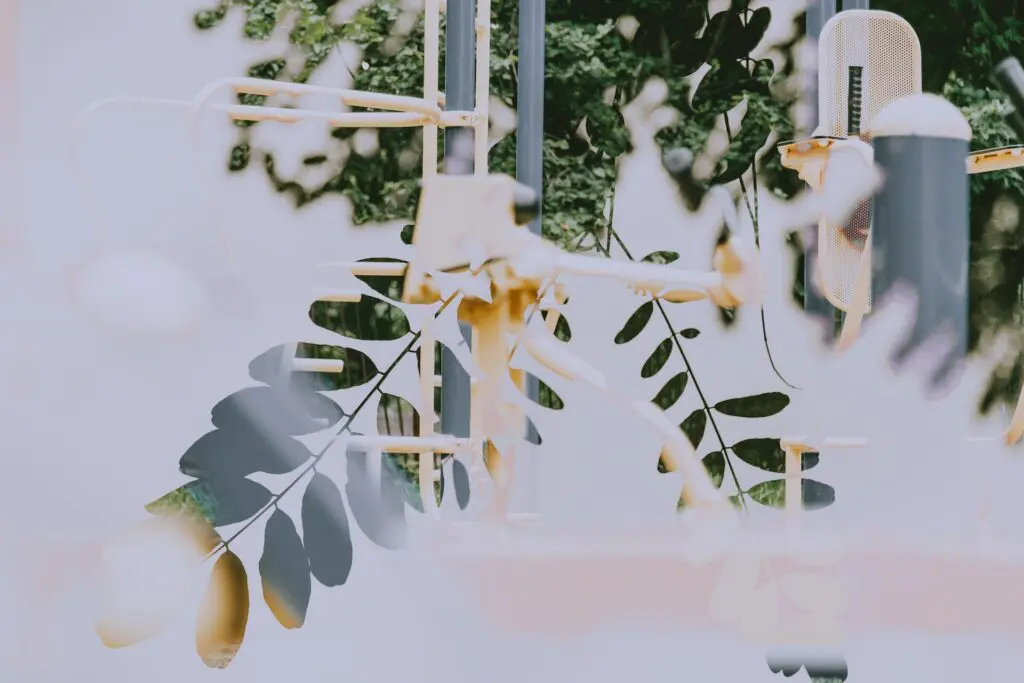
36. Try Backyard Astrophotography
Dark skies are great for astrophotography, but they may not be always accessible to everyone. If you have a backyard and you live in an area with acceptable sky conditions, you can do stunning astrophotography right from your backyard.
Here are some astrophotography ideas to do from home:
- Photograph the Moon – you can either photograph the moonrise or moonset against a landscape if you have the view or photograph the moon when it is high up in the sky. You can also try to capture the mineral moon, eclipses when they happen, etc.
- Photograph the Sun – sunsets and sunrises are great events to photograph as no two sunrises or sunsets are the same. Besides, a solar filter can capture sunspots and other events like transits and eclipses right from your home.
- Photograph the Milky Way – during the Milky Way season, even if you cannot get a great shot against a landscape, you can capture interesting closeup photos of the milky way when it is up in the sky.
- Capture deep sky objects – there are a lot of objects in the sky that you can capture from your backyard using just the camera and lens that you have. Nebulae, star clusters, and galaxies are some interesting subjects to photograph.

You do not need a telescope or even a tracker to capture deep-sky objects. Here are some basics with a lot of useful resources for backyard astrophotography with your camera and lens – A Guide To Untracked Astrophotography
We hope these ideas will help inspire you to capture photographs even if you are stuck at home for a reason or are feeling less creative. Do you have any ideas for photography from home? Please share with us in the comments section below.




